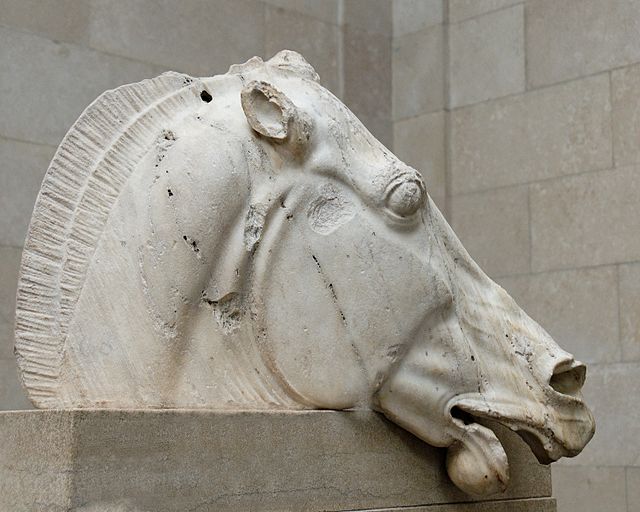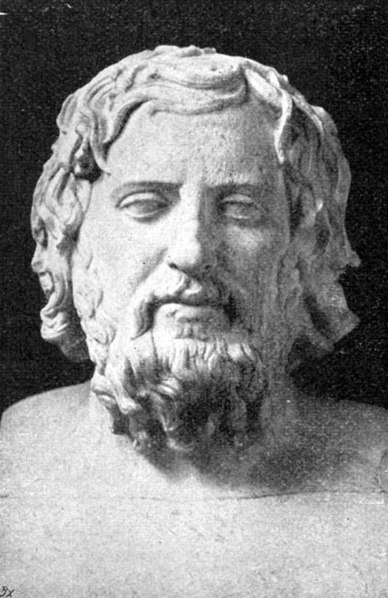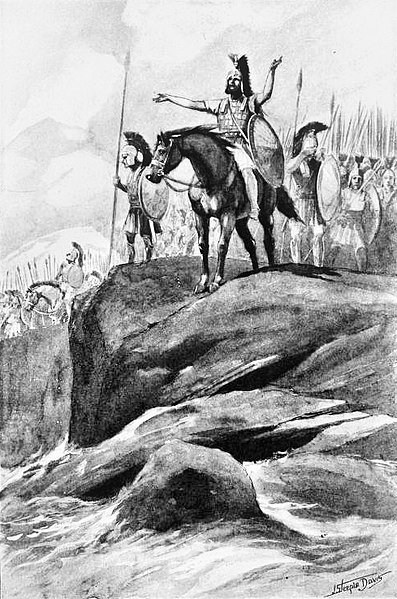On Horsemanship is the English title usually given to Περὶ ἱππικῆς, peri hippikēs, one of the two treatises on horsemanship by the Athenian historian and soldier Xenophon. Other common titles for this work are De equis alendis and The Art of Horsemanship. The other work by Xenophon on horsemanship is Ἱππαρχικὸς, hipparchikos, usually known as Hipparchicus, or The cavalry commander. The title De re equestri may refer to either of the two.
The ideal head of the warhorse
An Ethiopian groom and his charge
Two young Greek men, galloping their mounts.
A Greek statue showing the bitting and bridling system
Xenophon of Athens was a Greek military leader, philosopher, and historian, born in Athens. At the age of 30, Xenophon was elected commander of one of the biggest Greek mercenary armies of the Achaemenid Empire, the Ten Thousand, that marched on and came close to capturing Babylon in 401 BC. As the military historian Theodore Ayrault Dodge wrote, "the centuries since have devised nothing to surpass the genius of this warrior". Xenophon established precedents for many logistical operations, and was among the first to describe strategic flanking maneuvers and feints in combat.
Bust of Xenophon
Route of Xenophon and the Ten Thousand (red line) in the Achaemenid Empire. The satrapy of Cyrus the Younger is delineated in green.
Xenophon leading his Ten Thousand through Persia to the Black Sea. 19th-century illustration
Xenophon's Anabasis.








